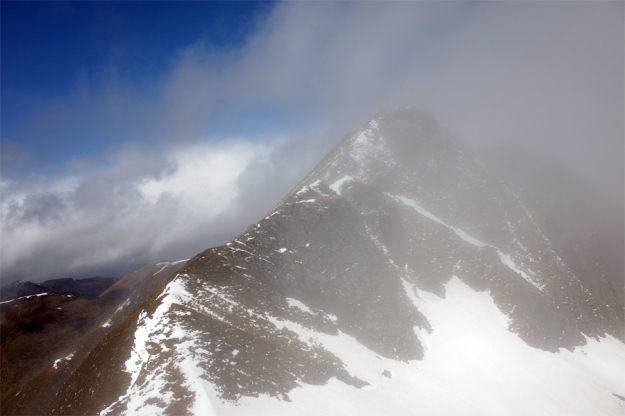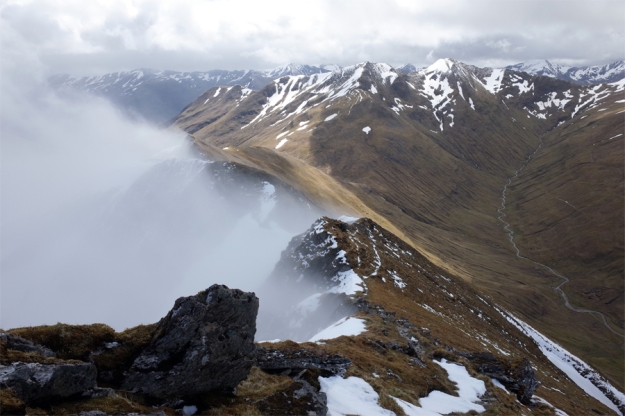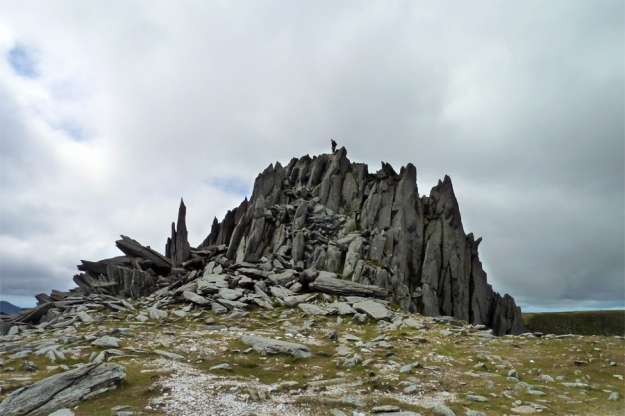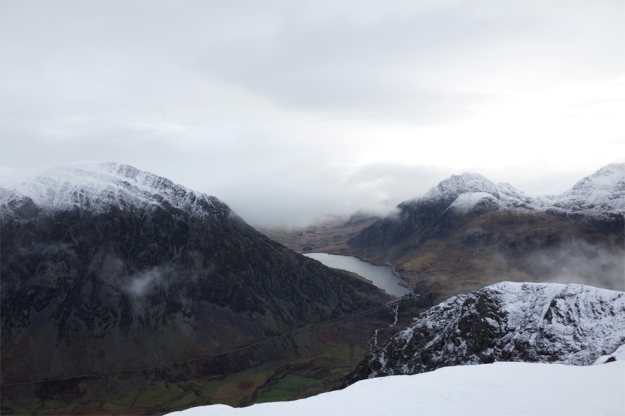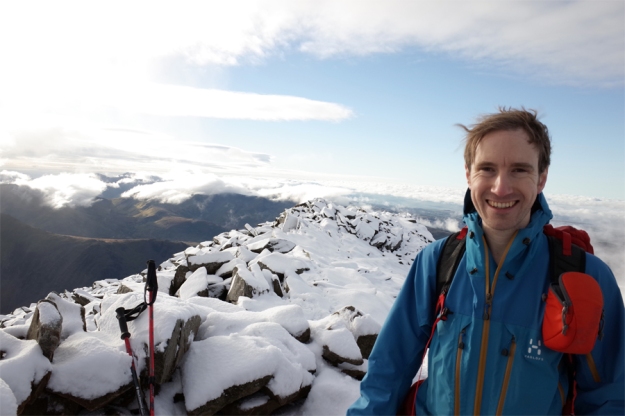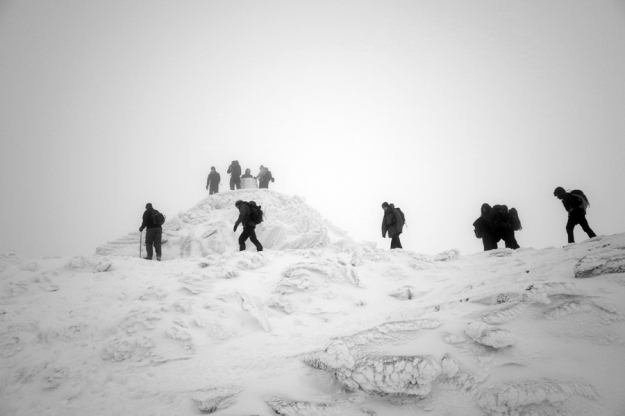Since injury struck in March I’ve finally nursed myself back to a level of hill fitness. In June I spent a week up in Kintail and managed to climb a couple of munros and some smaller hills. Although the the big routes for which the area is famous were beyond me I was still elated to reach the solitary summit of Ciste Dubh. I crossed Am Bathach, the Corbett to its south under grey clouds and in driving hail. Reaching the col (bealach a Choinich – or the col of the bog – the name is apt) the weather had only worsened and I was in two minds about continuing to the munro but I’m so glad that I did. The sun came out on the final ascent and the fin shaped summit was really beautiful. Ciste Dubh is probably the most attractive munro that I’ve climbed alone.
While injured I tried not to think about the mountains at all and over the last 3 or 4 months I’ve spent more time playing guitar than pouring over mountain maps. But now, in recovery, my mind turns to the mountains again. I’ve wanted to write something about the ‘list ticking’ aspect of peak bagging for a while. Spending a week in Wales with J recently, we climbed Snowdon and the Glyders together – all repeat routes for me. J is a fair weather walker and on our last walk together in February I regretted taking her on a miserable bog trot across 2 of the more obscure and uninteresting summits accessible from the Ogwen valley (only chosen because they were on my tick list). This time, I think J appreciated the solid paths on these more popular routes.
Time in the mountains is so precious and I’m so single minded in my pursuit of the munros and the Welsh 2000ers that part of me would have preferred to avoid re-visiting mountains already climbed. Really I would have loved to have picked off some new summits. But things on my radar either involved exposure (the Nanttle ridge) or bog trots (the northern Carneddau) – all of which would have made a dreadful day for J. Despite getting soaked on Snowdon, both days were really enjoyable. Up on the Glyders I climbed the cantilever stone and scaled Castell y Gwynnt (a really good little scramble) – both things I’d missed on my first walk across the Glyders.
Peak bagging is both a blessing and a curse. On the one hand, it can take you well off the beaten track to some beautiful locations that you wouldn’t otherwise get to. On the other hand I think it can deny you the opportunity of really getting to know a particular mountain or route. I’ve heard it said that “you never climb the same mountain twice”. Weather conditions and your own frame of mind always make each return to a mountain feel different. I’ve now stood on Snowdon’s summit in blazing sunshine, pouring rain and freezing snow and the mountain feels all the more familiar to me for these repeat visits.
I’ve also realised than when enjoying the mountains with others who don’t share my obsession with list ticking, it’s just not fair to drag them up routes that are either too difficult or too dull for them. While opportunities to get into the mountains are not as frequent as I would like, I’m slowly learning that I don’t have to climb a new mountain every single time I go out. That said, the greater distance and cost involved in getting up to Scotland means that when I do repeat hills, they are far more likely to be in Wales.
Looking ahead I hope to manage the Aonach Eagach ridge in September and to tick off some of the Lawers munros in October. Initially I’d planned to sweep through the latter in one giant day of seven munros. However, given my recent experience of injury I think it will be sensible to divide the Lawers range over two or three trips. The sports masseur who has helped me back to fitness since March has extensive experience as a triathlete and long distance runner and she has battled overuse injuries herself. Her best advice to me was that as far as endurance activities go (and mountain walking definitely falls into that category) it can take a few years for the body to really accustom itself to the stresses associated with the activity. So before I launch into 30k routes with 2000m of elevation it will pay dividends for me to spend a couple more years walking at half that level of intensity before stepping things up.

